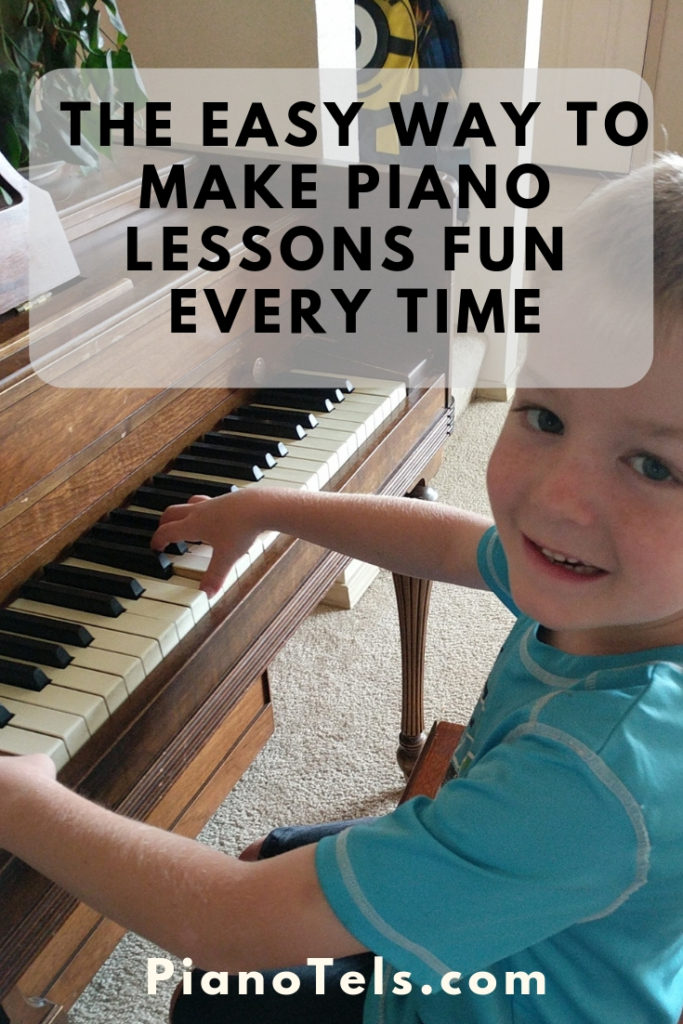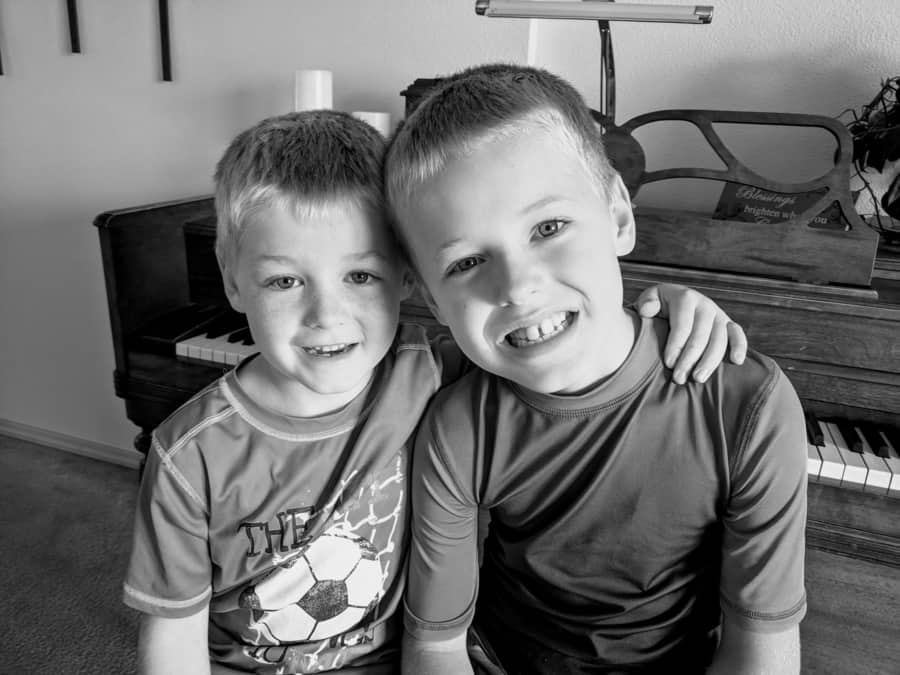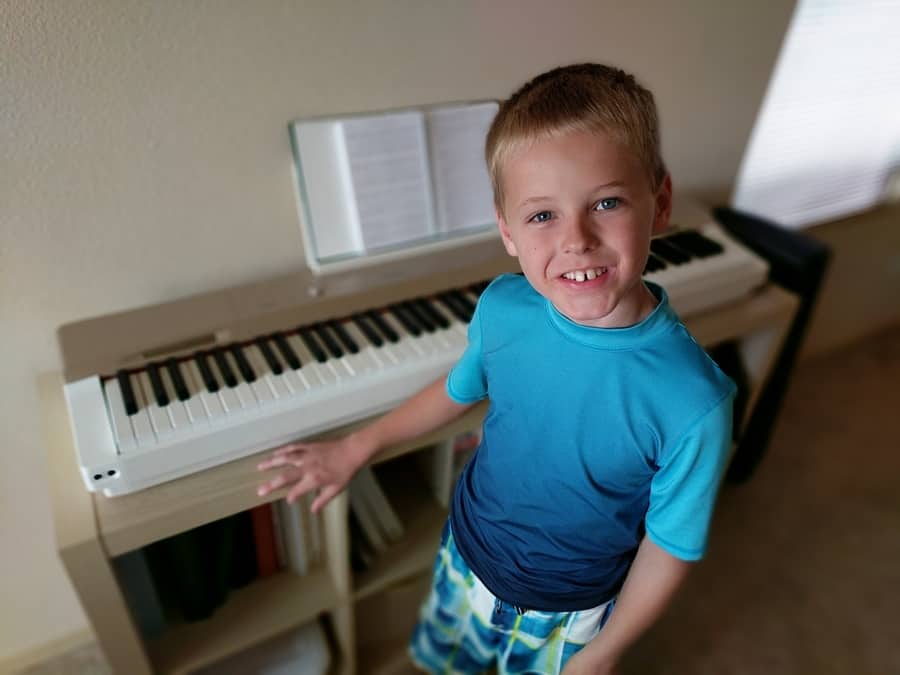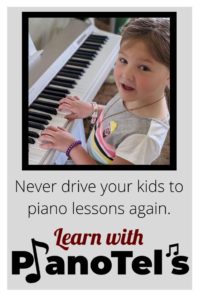
There is no reason that every piano lesson can’t be fun — or at least have some sort of fun element involved. I have spent hours and hours and hours and hours researching, asking other teachers, and finding out the easiest, most full-proof way to ensure that each of my piano lessons are fun.
The easy way to make piano lessons fun every time is to create a lesson plan full of resources to draw upon to expand education and learn something new, developing new and old musical concepts every time while creating whole musicianship.
That’s a tall order. But I am completely confident that you can do this! And it won’t take you hours of time preparing. This article is a gold mine of resources that I have put together that I use myself with extremely successful results. And my kids have fun!
How to create a fun lesson plan
I spent four years studying and creating lesson plans as I obtained my elementary education degree. I created lesson plans in all areas of education: science, math, english, music, history to name a few.
They all have the same pattern and pretty much work the same way. So let me help you skip the degree and just give you the main things that are important in planning a lesson.
Wait — hold the phone. I do need to make sure you understand that each lesson deserves a plan. We call them lesson plans. Without a plan, your lessons are going to get pretty drab. I promise. Your students will definitely know it.
A lesson plan provides you with direction and completely makes your time more efficient and purposeful. I hope you always make a lesson plan. Pretty please!

Start with an Objective
At the top of every lesson plan, you need to have a purpose. What is your objective? What is the goal you are planning on achieving during this lesson? Everything that goes below this purpose has to be part of fulfilling that objective.
Please note that you can absolutely have more than one objective for your lesson. Some examples of objectives:
- To teach and assess _________ (principles of music theory).
- To assess and evaluate the student’s piece of music in order to prepare them for recital.
- To study the life of (insert piano composer) in order to learn _________.
- To evaluate the student’s weekly practice and to help them better their at home practices.
- To allow the student to perform their piece.
- To compose and create by ________________.
For other ways to organize your piano studio, check out my article by clicking the link.
List of Materials
I like to put my list of materials close to the top so that I can refer to them to make sure that I have all the needed supplies by the time my lesson begins. I keep a running list of supplies as I create my lesson plan. Check out my must-haves for my piano studio.
Fun Introduction (plan for 3-5 minutes)
Here is where you can start thinking “fun”. You need some sort of introduction to get your lesson going. Instead of jumping in cold turkey, this is a place to set the stage and get them warmed up for some music lesson fun.
Have several ideas to draw upon here and so that you can switch it up more often. Students, and teachers may I add, enjoy a little variety, so switching this up is helpful. But you don’t need to recreate things every time.
So create a master list and add to it every time you think of ideas to add in here and just pull from it as needed. Some ideas of what to do here to get the students ready for piano lessons:
- Listen to an inspiring song while following along on a listening map.
- Create a listening map, or draw a story with a song.
- Clap a rhythm and have them match the rhythm. Or play the cup game with the teacher.
- Play a simple song (i.e., 3 Blind Mice) using a different instrument. (drums, bells, maracas, harmonicas, bazookas, etc.) You can play it in a round with the teacher.
- Play a simple piece on the piano and see if they can copy it without the music. Or choose a popular song and have them play it by ear.
- Here are some other creative ways to start your lessons in Tim Topham’s website.
Review and Follow-up (plan 5 minutes)
This is the part of the lesson in which the student can show off what they have been practicing all week for you. Allow the student to show you the things that they feel they have done well. Usually, they are pretty anxious to show me some of those things they have been working hard on.
You can follow up with some previously discussed items here, but mostly this is a time to just pat your student on the back for a job well done as they show off to you.
Lesson (5 minutes)
Make sure you check out your objectives. This is a big portion of the “teaching” part of your lesson plan. What things do you need to teach them? If it is a lecture, keep it short. My lessons can include:
- Teaching theory
- Teaching music history
- Teaching techniques
- Teaching a new song
Fun Application (10 minutes)
This goes hand in hand with the lesson, but it is the section that is a lot easier to incorporate the “fun” into what you just taught them. Find a way for them to actually apply what you have been teaching them.
This can often be done in a game. Take careful thought as to how you can make this fun or interesting and how you can engage your student.
- For teaching music theory, there are lots of games and activities out there. I have compiled a list of my favorite games here. This list is amazing. I have been very particular about which activities make the list because I only want the best, most fun, but completely purposeful activities that I can use in my lessons. Organize your games and activities here.
- Teaching music history can be done in a lot of creative ways:
- Decorate a composer with stickers
- Create a music composer top secret folder
- Find an object to represent a song or composer
- For 9 fun ways to teach music history, click this link.
- For teaching music techniques:
- If trying to teach scales, Hanon, or some type of finger strengthening skill, do it to a fun beat or rhythm. There are a lot of different rhythms on most electric pianos.
- See if they can beat the teacher.
- For teaching a new song: (See Piano Music My Students Love)
- Play the song in the way it is intended. Sometimes just hearing the song will provide motivation when they realize how cool the song is when it is played right.
- Seek to understand the music well. Digest all the pieces of this particular piece of music to make it more “friendly” to the student.
- Start with the most difficult part first and make sure they get it down so that they can get the rest of it on their own with ease.
- Give them all the keys you can think of to succeed in learning their new song.

Compose to Close (5 minutes)
Creating and composing are one of the secrets to FUN in piano! Your students will love this. Especially with some practice. It can be a little easier for some than others, but practice helps.
Again, I like to have several tricks in my tool belt to pull out depending on the amount of time I have for this. Check out the master list I have created in my article, “32 Quick & Easy Ideas for Piano Improv and Composition”. Here is a sampling of some of those ideas from that article:
- Play a chord progression and have them free style whatever it is they want to play with it. If they can play the chord progression on their own, then let them.
- Play a rhythm, such as one off of an electric piano, and let them play a simple song adding some cool rhythm to it: Twinkle, Twinkle Little Star, Are You Sleeping, Hot Cross Buns, Mary Had a Little Lamb, Jingle Bells, Ode to Joy, etc.
- Transpose a song.
- Cut and paste a song together to create a new variation of it.
- Work through this FREE composition workbook by Jennifer Eklund.
- Come up with a cool title to a song they could create.
- Have them “play” in whatever way they want, an object or a scene. Examples: a rainbow, a storm, an elephant, a butterfly, a waterfall, a rollercoaster
This is a fun way to end your lesson and they will walk out the door with a smile on their face. Your lesson will be a success! Are you feeling like we don’t have enough time? We don’t.
But believe me, the lesson will fly by if you have filled it with fun-packed things. The more you have a well-thought out fun lesson plan, the more you will enjoy the lesson and the more your student will as well.
Adapt as needed
This lesson plan won’t work for everything you ever want to teach. So adapt it to what your needs are. This lesson plan is for 30 minutes, but obviously you can adapt that to whatever length you need. The point is, PLAN. It will make or break your studio if you just put a little effort into planning your lessons!
Tel loves her life as a piano player, a piano teacher, and a mom. Amid piano blogging, piano teaching, and piano playing, she loves a chance to fit in a good exercise class, volunteer at her kids’ school and at her church, and go on long dates with her husband. Full bio at About Tel.


